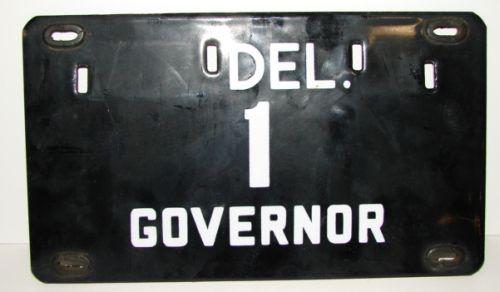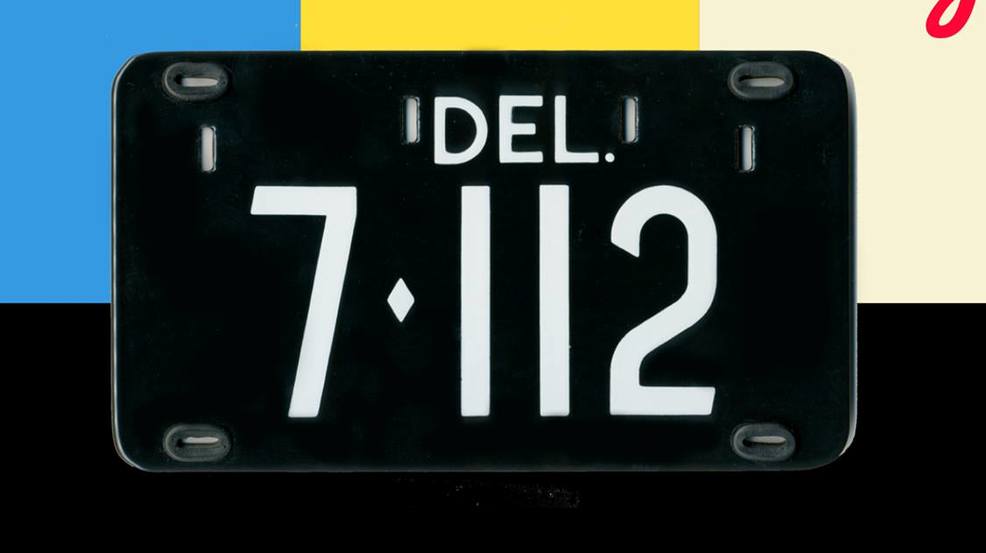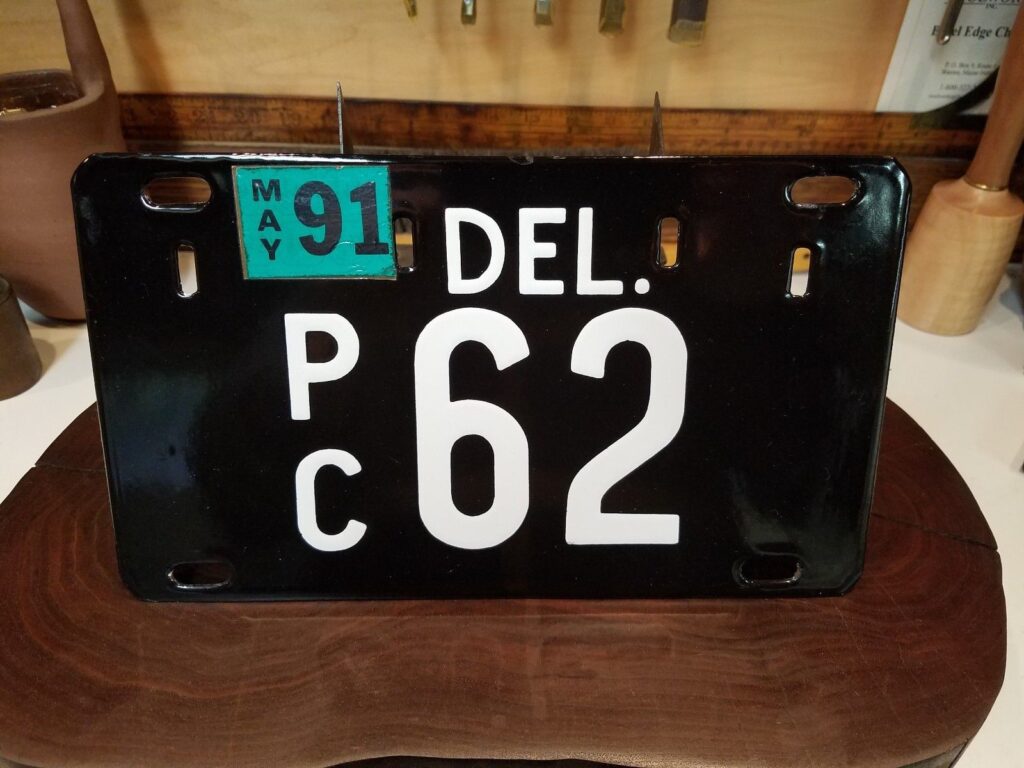What’s the deal with those odd low-numbered license plates? How can you have just a ‘28’ on a plate, or ‘70’? How about ‘6’ or ‘121’? Why are some plates blue and gold, and others black with numbers only? Here’s a primer on the roots of this odd Delaware phenomenon.
Low numbers on black porcelain plates are a special Delaware thing. The lower the number, the more valuable is your plate. Strange but true. Most new residents will register their vehicles and receive a blue and gold aluminum plate (state colors), unless they want to dive into the competition and pay for a unique plate of their own.
“1” is reserved exclusively for Delaware’s governor. “2” is for the Lieutenant Governor, and “3” is handed to the Delaware Secretary of State.
If your grandfather happened to have an original black and white plate (which were numbered in the order of registration), chances are in Delaware that he willed the plate and its precious low number to one of his favorite offspring. Transfer of these coveted plates can fetch upwards of $400,000, and some Delawareans use them as lifelong investments (much like investing in silver or gold). One low-digit plate, in 2018, actually was auctioned off for $675,000!
Why the fuss? Because, oddly, it represents a sort of statement of tradition or political connection. Or, simply Delaware Blue Hen pride. There are websites that specialize in this curious local marvel, and then there are the annual long lines when the Delaware DMV issues a few new ones every November. The Delaware Historic Plate Society is even dedicated to preserving the proud tradition of porcelain plates which date back to 1942.
It’s a peculiar DE thing. Plates are gifted to newlyweds or grandchildren. They are in wills and estate plans, listed as assets. Call it a vanity plate, or call it a uniquely Delawarean symbol of First State pride. Now you know yet another First State tradition, another endearing and unique characteristic that just makes us LOVE LIVING HERE more!


